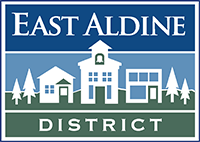
News: Greater Houston Flood Mitigation Consortium report conveys need to accelerate paradigm shift; shares analyses on existing and proposed reservoirs, regulations, drainage, buyouts, and more
Strategies for Flood Mitigation in Greater Houston, Edition 1, a report released today by the Greater Houston Flood Mitigation Consortium, calls for accelerating the paradigm shift underway in how the Houston area plans for and recovers from flooding and its consequences. While eliminating flooding in Houston is not possible, there are practical opportunities for reducing the effect flooding has on people’s lives. This initial report, which is based on current information from multiple local agencies and experts, draws a number of key conclusions on flood mitigation tactics such as infrastructure, regulations, local drainage, and buyouts.
A link to the full report can be found under “Report” here.
Among the key conclusions within the report:
General:
- The level of flood protection across watersheds is not equitable. Addicks and Barker reservoirs are already able to handle the current 1 percent design storm. Even with the federal projects, Brays Bayou, Clear Creek, Hunting Bayou, White Oak Bayou and Greens Bayou will not be able to handle the 1 percent storm, and tributaries of those bayous, and well as several other major bayous like Cypress Creek and Vince Bayou have not been studied in detail or had projects identified.
- Most flood control assessments, including the federal government’s cost-benefit ratio, calculate benefits through economic value, not impact on human lives. We can measure projects by the number of people who benefit or use more sophisticated tools like Social Impact Assessment.
Flood Mitigation Infrastructure:
- There is no publicly available information that clearly proves or disproves the structural integrity of Addicks and Barker reservoirs. Rather than continue to subjectively debate this topic, there is a call for a clear report on the condition of the dams, including public transparency on risks and any required structural improvements that may be needed.
- The “third reservoir” as currently proposed is primarily intended to mitigate new development. It is not designed to reduce flooding in Buffalo Bayou nor does it solve issues with the Addicks and Barker reservoirs. The “Plan 5” reservoir defined by the Cypress Creek Overflow Study creates a scenario that allows future development of the Katy Prairie, land that currently absorbs a considerable amount of stormwater.
- A new reservoir in northwest Harris County, specifically designed to address the Cypress Creek watershed, could significantly help mitigate repeated flooding of Cypress. A “third reservoir” in the same general area studied in the Cypress Creek Overflow Study, that targets reducing flooding in the badly damaged Cypress Creek watershed, could be very effective in addressing repeated flooding in the downstream areas of that watershed.
- Where watersheds remain undeveloped, acquisition of land along the bayous and creeks is a cost-effective flood mitigation tool. Whether in the upper undeveloped watershed or downstream along the channel and its tributaries, undeveloped land gives the water room to spread out in a flood event, to prevent the impacts that new development on that land would have, and to preserve these green spaces for flood mitigation.
Regulations:
- Under current detention regulations, new development, especially in previously undeveloped areas, still increases downstream flooding. Natural ecosystems and agricultural areas absorb some water, hold some water through ponding, and release the rest slowly. While current detention regulations limit the rate of water, the assumed conditions in these calculations overestimate pre-development runoff rate and thus underestimate the increase in runoff. The regulations also do not limit total runoff volume, which is critical in multi-day storms.
- The existing regulatory system overseen by multiple jurisdictions is confusing at best and possibly counter-productive. The current patchwork approach, with platting, detention, floodplain management, infrastructure requirements, and building regulations handled by multiple entities, makes it difficult to address watersheds, and as a whole, can allow harmful projects to slip through the gaps.
Buyouts:
- Buyouts studied alongside flood control infrastructure allow for determining the most effective and least expensive solutions. This proactive approach is a departure from a system that is currently reactive, only buying homes that are hopelessly deep in a floodplain. Benefits can include preventing future flood damage, providing land for better flood control infrastructure, new parks and open space, and improved housing stock.
- Extensive buyouts without a coordinated housing plan will worsen the affordable housing shortage already confronting the region. A countywide housing plan could anticipate future housing needs, particularly after a flood event and identify locations with access to work, schools, and social services.
- Flexible funding from non-federal sources allows more properties to be included in buyout programs and encourages property owners to participate, avoiding the “checkerboard effect.” Federal funding comes with limitations while local funding can be flexible, addressing properties within a buyout area that don’t meet federal requirements and offering compensation and relocation assistance that makes moving feasible for residents.
Public Engagement:
- An educated public is fundamental to building and sustaining support for the long work of mitigating flood impacts. Robust engagement through the decision-making process will not only improve results but ensure equitable outcomes.
In the coming months, watershed analyses will be completed, which will allow for more detailed conclusions and Edition II will include these findings.







